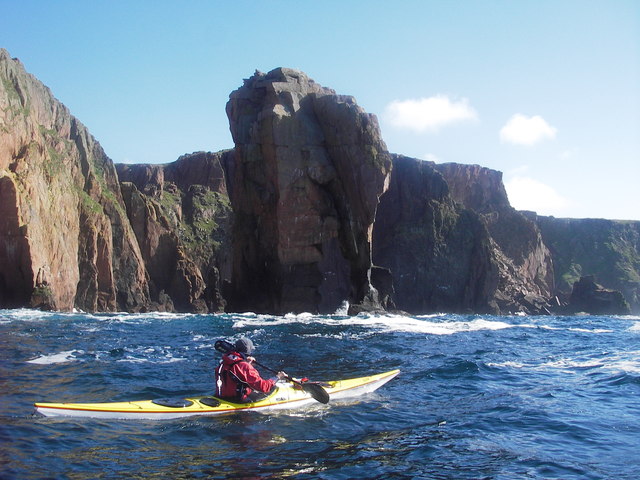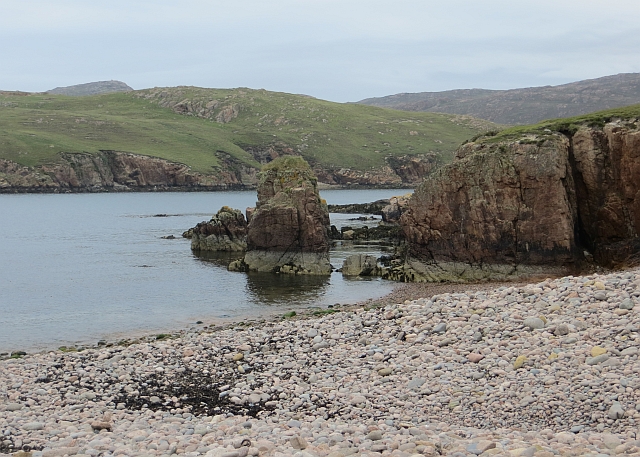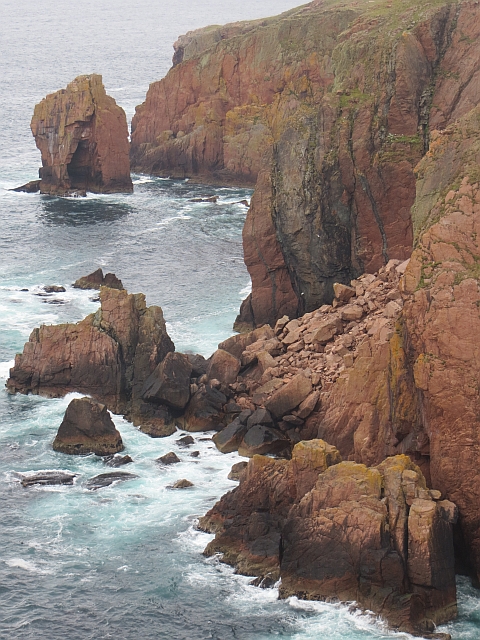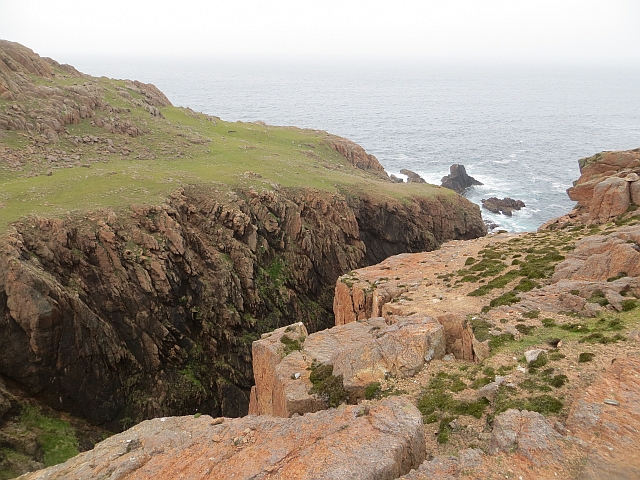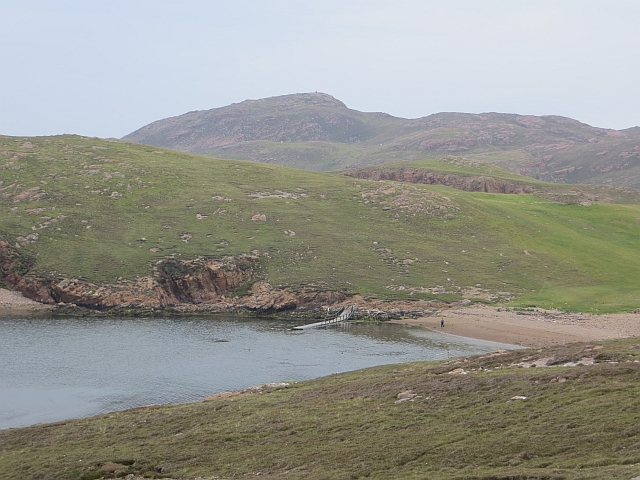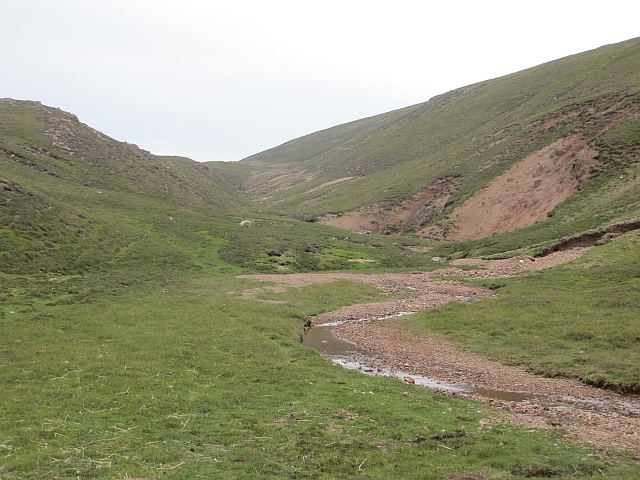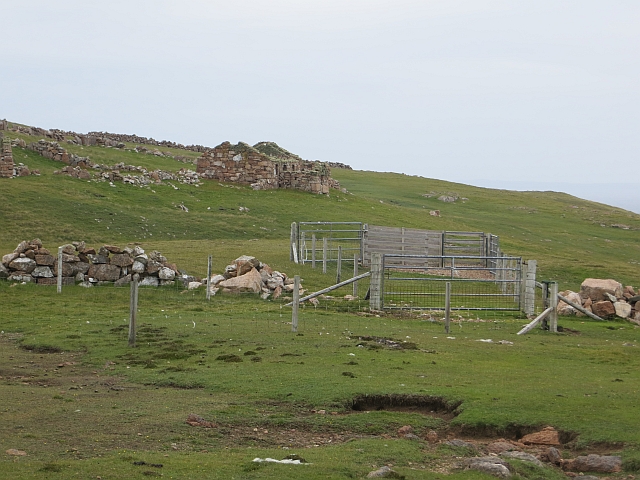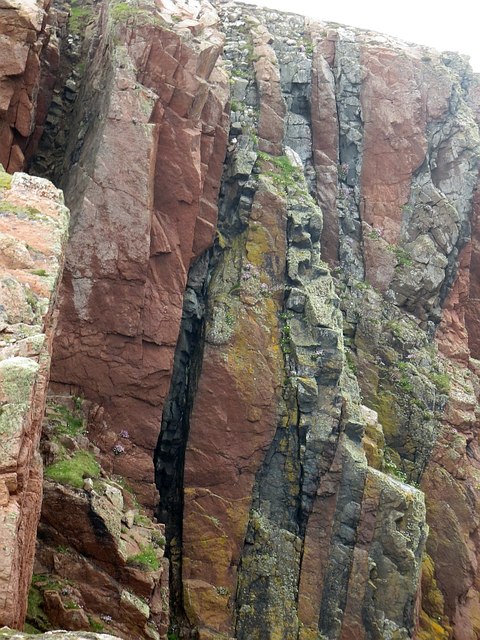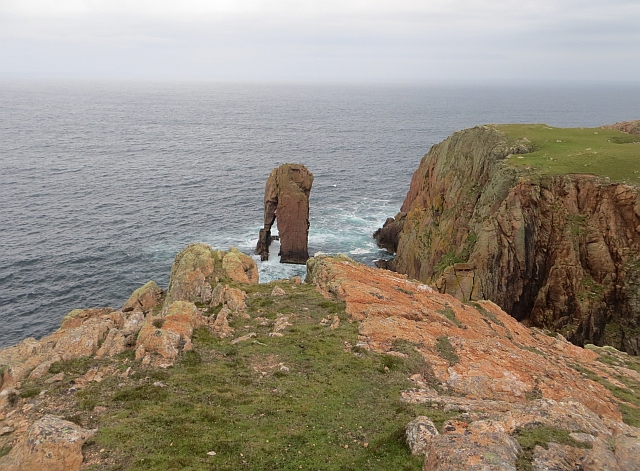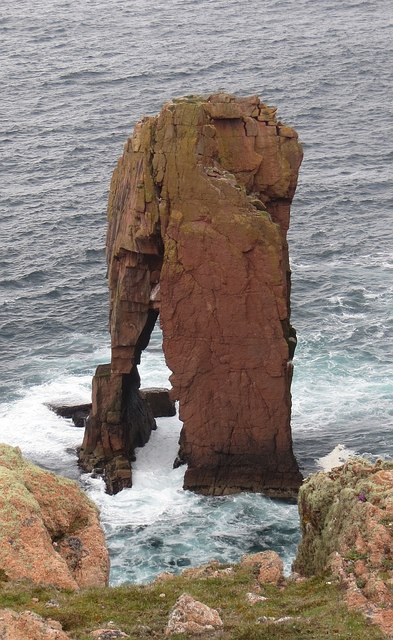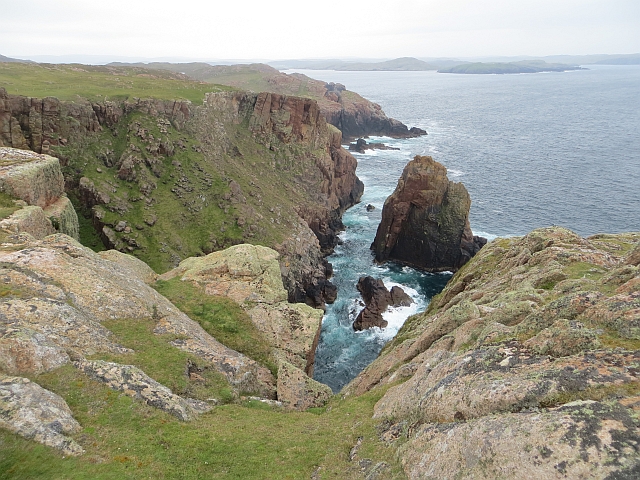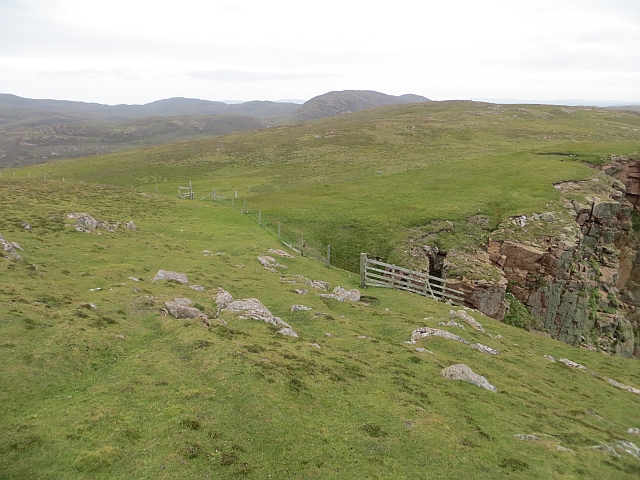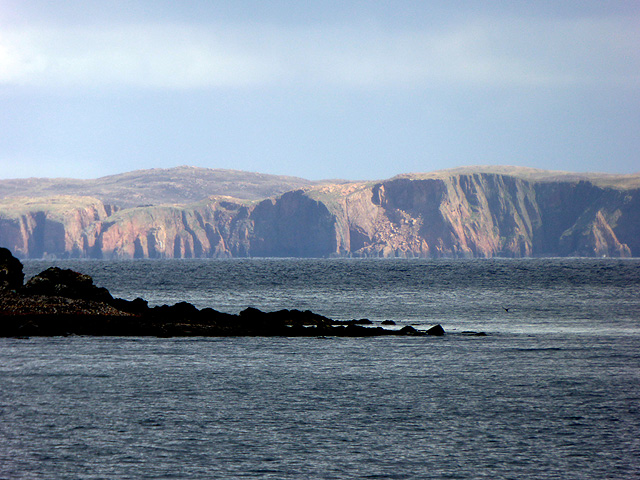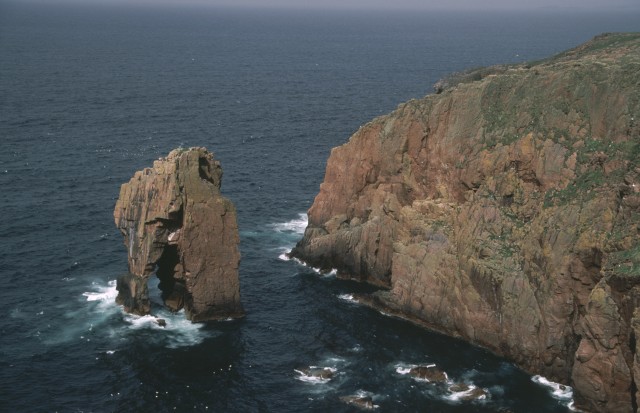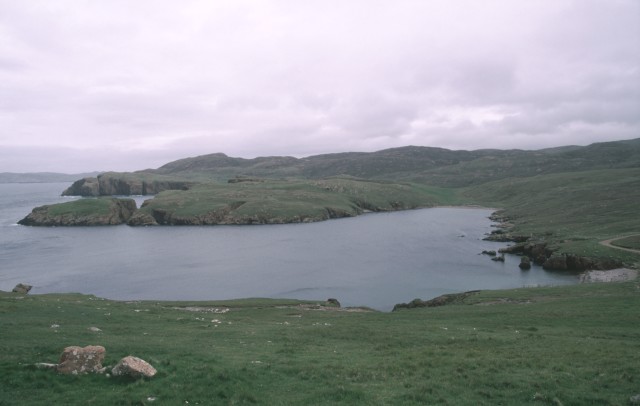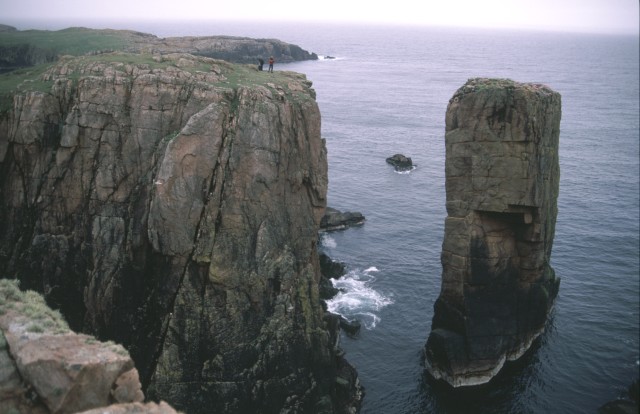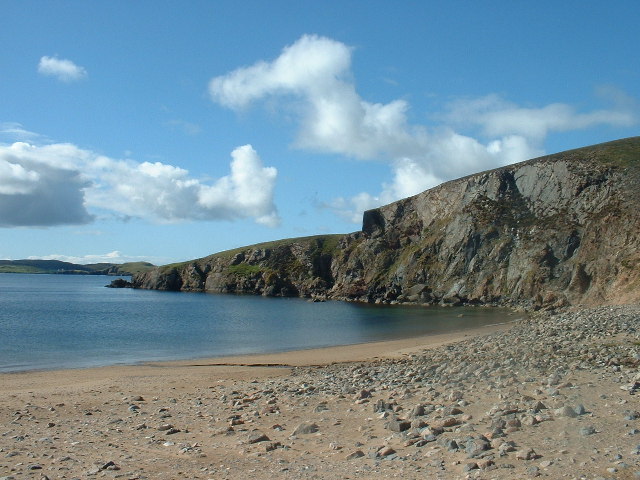Tame Holm
Island in Shetland
Scotland
Tame Holm
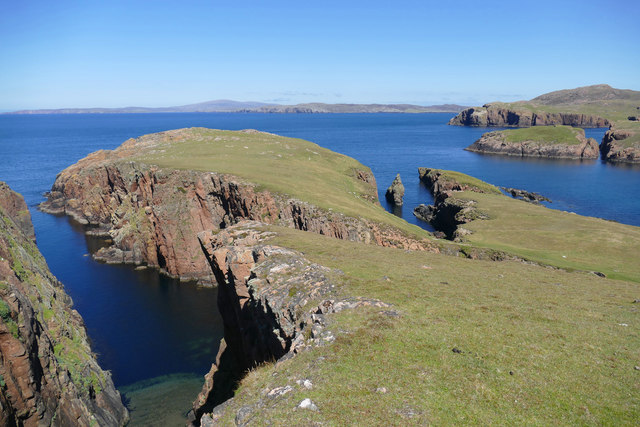
Tame Holm is a small island located in the Shetland archipelago, which is situated approximately 170 kilometers north of mainland Scotland. With an area of just 0.15 square kilometers, it is one of the smallest islands in the Shetland group. Tame Holm is situated in the Yell Sound, between the larger islands of Yell and Unst.
The island is uninhabited and has no permanent structures or facilities. It is predominantly composed of rugged, rocky terrain, with no significant vegetation cover. Tame Holm is surrounded by clear, turquoise waters, offering stunning views of the surrounding islands and the Atlantic Ocean.
Despite its small size, Tame Holm holds historical significance due to the presence of a prominent lighthouse. The Tame Holm Lighthouse, constructed in 1915, stands tall at approximately 14 meters in height. It provides a guiding light to passing ships navigating through the treacherous waters of the Yell Sound. The lighthouse's white tower with a red lantern room is a distinctive feature of the island's landscape.
Tame Holm offers a unique opportunity for visitors to experience the tranquility of an untouched natural environment. The island is a popular destination for birdwatchers, as it serves as a nesting site for various seabirds, including puffins, gannets, and razorbills. Seals and otters can also be spotted along the island's shores.
Access to Tame Holm is mainly via boat or ferry from neighboring islands. Visitors are advised to take caution while exploring the island due to its rocky terrain and lack of facilities.
If you have any feedback on the listing, please let us know in the comments section below.
Tame Holm Images
Images are sourced within 2km of 60.376493/-1.4630477 or Grid Reference HU2965. Thanks to Geograph Open Source API. All images are credited.

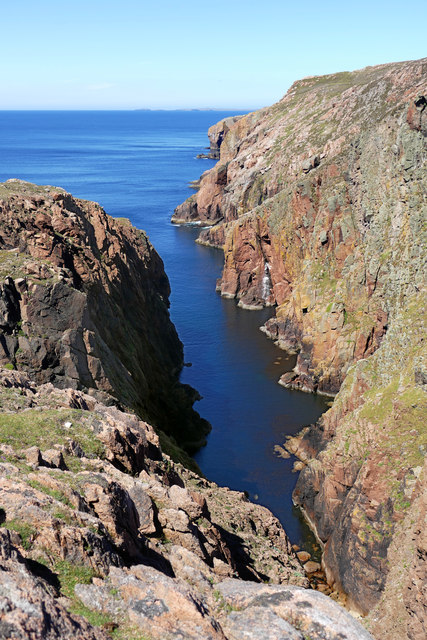
Tame Holm is located at Grid Ref: HU2965 (Lat: 60.376493, Lng: -1.4630477)
Unitary Authority: Shetland Islands
Police Authority: Highlands and Islands
What 3 Words
///shuttered.skipped.decrease. Near Brae, Shetland Islands
Nearby Locations
Related Wikis
Muckle Roe
Muckle Roe is an island in Shetland, Scotland, in St. Magnus Bay, to the west of Mainland. It has a population of around 130 people, who mainly croft and...
Mavis Grind
Mavis Grind (Old Norse: Mæfeiðs grind or Mæveiðs grind, meaning "gate of the narrow isthmus") is a narrow isthmus joining the Northmavine peninsula to...
Linga (near Vementry)
Linga is one of the Shetland Islands, near Vementry. It is one of many islands in Shetland called Linga. The island is uninhabited. == Geography and... ==
Vementry
Vementry (Old Norse: "Vemunðarey") is an uninhabited Scottish island in Shetland on the north side of the West Mainland, lying south of Muckle Roe. �...
Busta Voe
Busta Voe, (HU665350), in the north central Mainland, Shetland, is a sea inlet lying between the village of Brae and the island of Muckle Roe. At the head...
Linga, Busta Voe
Linga is a small, uninhabited island, 1 km (0.62 mi) east of Muckle Roe in the Shetland Islands. The island is roughly circular in shape and its highest...
Papa Little
Papa Little (Scots: Papa Little; Old Norse: Papey Litla, meaning "the little island of the priests") is an island in St Magnus Bay, Shetland, Scotland...
Brae
"Brae" is also the Lowland Scots language word for the slope or brow of a hill.Brae (Old Norse: Breiðeið, meaning "the wide isthmus") is a village on the...
Nearby Amenities
Located within 500m of 60.376493,-1.4630477Have you been to Tame Holm?
Leave your review of Tame Holm below (or comments, questions and feedback).
